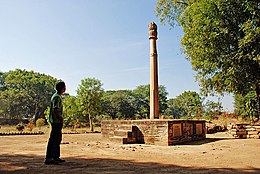Russian Scientists heralded the science of Wave Genetics by stating that all this while the DNAs which were thought as Junk DNA is mutating and we humans will evolve from Double strand to three to six to twelve. DNA evolution is Cosmic Spirituality. DNA functions like a holographic computer, part of the larger hologram of the information wave reality.
The findings of the G-quadruplexes mark the culmination of over 10 years investigation by scientists to show these complex structures in vivo — in living human cells — working from the hypothetical, through computational modelling to synthetic lab experiments and finally the identification in human cancer cells using fluorescent biomarkers.
Physical studies over the last couple of decades had shown that quadruplex DNA can form in vitro — in the ‘test tube’, but the structure was considered to be a curiosity rather than a feature found in nature. The researchers now know for the first time that they actually form in the DNA of human cells. Quadruplex DNA is actually found fairly consistently throughout the genome of human cells and their division cycles

Just a few years ago, modern medicine officially acknowledged the first case of a child with 3 DNA strands. A two-year-old boy, Alfie Clamp became the only person in the world to be diagnosed with an extra strand in his DNA. He was born blind and with severe disabilities, which led doctors to carry out various tests. They revealed his seventh chromosome had an extra strand of material which had never been documented anywhere in the world before. Doctors were baffled at his condition, which is so rare it does not have a name.
The findings of the G-quadruplexes mark the culmination of over 10 years investigation by scientists to show these complex structures in vivo — in living human cells — working from the hypothetical, through computational modelling to synthetic lab experiments and finally the identification in human cancer cells using fluorescent biomarkers.
Physical studies over the last couple of decades had shown that quadruplex DNA can form in vitro — in the ‘test tube’, but the structure was considered to be a curiosity rather than a feature found in nature. The researchers now know for the first time that they actually form in the DNA of human cells. Quadruplex DNA is actually found fairly consistently throughout the genome of human cells and their division cycles
The Russian biophysicist and molecular biologist Pjotr Garjajev and his colleagues also explored the vibrational behavior of the DNA. The bottom line was: “Living chromosomes function just like solitonic/holographic computers using the endogenous DNA laser radiation.” This means that they managed for example to modulate certain frequency patterns onto a laser ray and with it influenced the DNA frequency and thus the genetic information itself. Since the basic structure of DNA-alkaline pairs and of language (as explained earlier) are of the same structure, no DNA decoding is necessary.
Through scientific inquiry, research has exposed that only 3% of our DNA is wrapped up in the spiraling double helix strand. During the time of the 75,000 year cycle when we are exposed to the most torsion energy waves and it affects our DNA by reorganizing the 97% “junk” DNA from a 2-strand double helix to a 12-strand helix advancing man in a leap of evolution.
Marco Torres is a research specialist, writer and consumer advocate for healthy lifestyles. He holds degrees in Public Health and Environmental Science and is a professional speaker on topics such as disease prevention, environmental toxins and health policy.Read more at: Prevent Disease
myscienceacademy.orgLINK
starseeds.net




